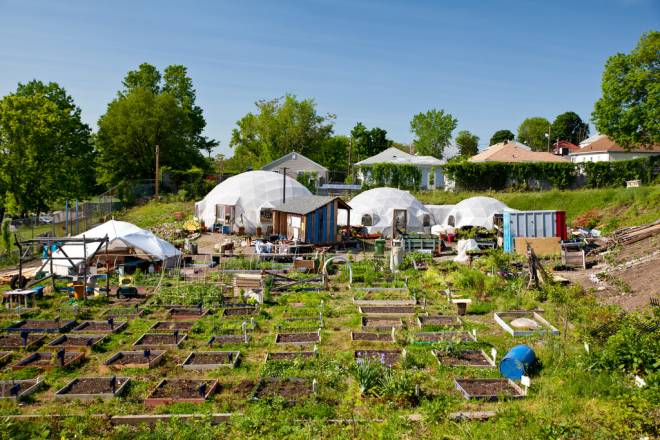Green Fingers, Green Living: Sustainable Farming on your Doorstep
By: Jenni Pitwell
Sustainable farming has long been a part of New England life and with the increase in consumer awareness about the relationship between diet and health, many new exciting projects are being introduced to this grass roots region of the U.S. With the worrying statistics about obesity across a nation of fast food lovers, more and more people are turning to their local farmers, as they want to bring honest, nutritious food to the table for all the family to enjoy. Eating local, fresh produce isn’t as difficult as you might think.
New England Initiatives
Organizations such as Historic New England are promoting sustainability with energy efficiency around the state, and preserving old buildings while they do so. Case studies include the weatherization project at the Lyman estate in Massachusetts, which looks at reducing energy costs by half. Sustainable agriculture is also important to the organization, which is working on a Community Supported Agriculture (CSA) program at Casey Farm and working with communities to document farming in Rhode Island.
CSA was introduced to bring people together to help sustain local farming and since it was introduced in the 1980s, it has been gaining popularity. The idea comes from Switzerland and Japan, where it has been working successfully since the 1960s, and people have been making partnerships to ensure the market is stable for crops. There are over 400 CSA farms throughout the U.S now, promoting the idea of community farms in urban areas and New England is a popular region for this type of project. The aim of these farms is to produce organic, quality food such as fruit, vegetables, herbs, dairy, meat and often firewood too.
Sustainable agriculture is at the heart of healthy living. Diversity of farmers markets and crops being produced makes this a very dynamic and buoyant idea that's now spreading through the U.S. Consumers are demanding more local produce and are wanting to become involved in the process, from farm to table. In 2006, New England’s farms rose to 27,950, with the average size being 143 acres. Local, fresh dairy produce has been the main contributor, with more of an emphasis now on cows being fed quality grass. Local farming starts with the roots and works its way up; organic produce means that only natural, nutrient rich ingredients make their way from the farm to the home.
Farm to Table
Consumers are enthusiastic about the farm to table idea in New England. There are now plenty of pick your own farms with a plethora of seasonal fruits and veggies to enjoy, from apples, peaches, cherry tomatoes, raspberries and pumpkins, depending on the time of year. There are paw-paws, blueberries, watermelons and cantaloupes to be had too, on the farms of Rhode Island. The best thing about this experience, apart from it being the perfect way to bring the family and friends together in the great outdoors this spring, is that you know exactly what you are bringing to your table.
Picking your own or shopping for produce that is locally sourced is easily done and is a trend that is growing fast. Farmers markets are an ideal way of making sure that you are choosing the best in local foods and these are held regularly throughout New England. Notable markets include Maine’s Portland Farmer’s Market, Waitsfield Market in Vermont, Coventry Regional Farmer’s Market in Connecticut and Coastal Grower’s Market in Rhode Island. Coastal Grower’s market sells produce from Casey Farm, alongside plenty of other vendors and you can visit the market on Saturday mornings between May and October. Eating seasonal, fresh produce means that you are not only supporting the community’s farms but you are also providing your family with the best choice of food and you know exactly where it’s from. There is such a diversity of New England produce to choose from and experimenting with new ingredients in your home cooking is both rewarding and beneficial for your family.
New England’s open markets are renowned for their variety and there are plenty to choose from throughout the region, providing consumers with fresh dairy, veggies, fruit, herb and meat products from only the local farms in the area. By shopping local, you are supporting sustainable agriculture and benefiting from the quality produce on offer.




.JPG)

.JPG)

